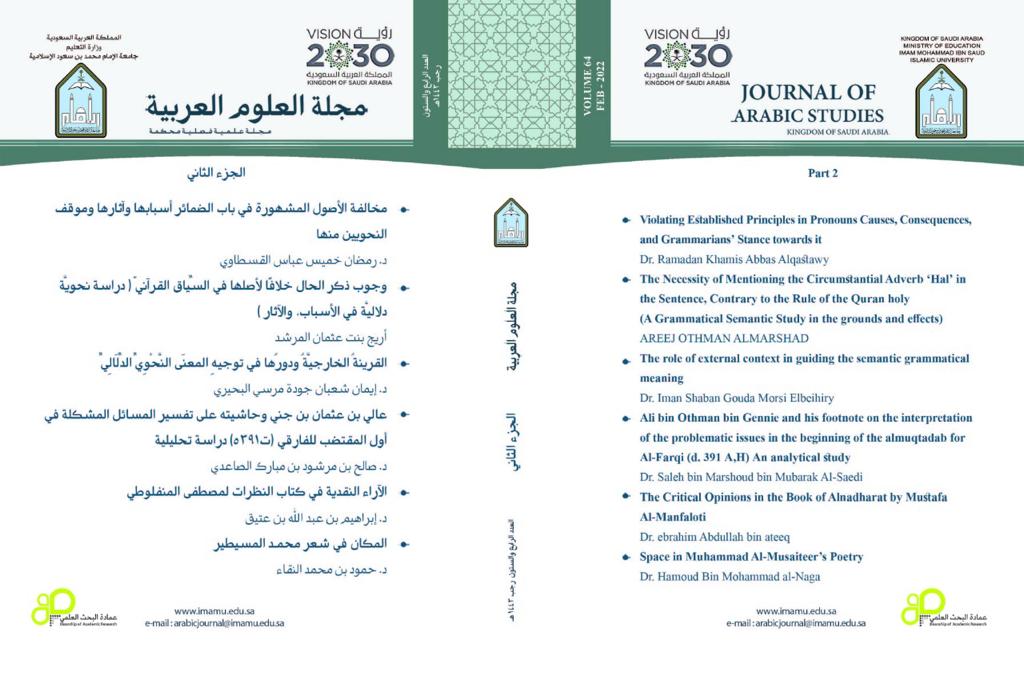The Necessity of Mentioning the Circumstantial Adverb ‘Hal’ in the Sentence, Contrary to the Rule of the Quran holy (A Grammatical Semantic Study in the grounds and effects)
Keywords:
Departing from the rule – Arabic Grammar and the Qur’anAbstract
Research Topic: The Necessity of Mentioning the Circumstantial Adverb ‘Hal’ in the Sentence, Contrary to the Rule of the Quran holy (A Grammatical Semantic Study in the grounds and effects)
Research Objectives: To highlight the extent to which the rules of stating the Circumstantial Adverb (i.e. ‘Hal’ in Arabic) were applied by grammarians in the cases in which it cannot be omitted; to list the methods that can be used to state the Circumstantial Adverb ‘Hal’ in the sentence; to identify the positions in which the Circumstantial Adverb ‘Hal’ had to be mentioned in the Qur’anic text; to deduce the causes behind mentioning it and the effects of mentioning it in violation of the original grammatical rule; and to determine the importance of mentioning it and the effect of omitting it.
Research Methodology: The researcher used the descriptive methodology, adopting the approaches of induction and analysis as the two main research tools.
The Most Important Results: The Circumstantial Adverb ‘Hal’ is one of the grammatical additions which do not always follow the grammatical rules, in some cases mentioning the Circumstantial Adverb ‘Hal’ is a must due to its importance for clarifying the intended connotation in the Qur’an context. As for the reasons that require violating the rule dictating omitting it, they are only two reasons: for generalizing a specific case or limiting the possibilities – in both cases the intended meaning cannot be clearly delivered unless by mentioning the Circumstantial Adverb ‘Hal’. If the Circumstantial Adverb ‘Hal’ is not mentioned in such cases the connotation or significance of the speech will be vague and ambiguous. However, those grammatical cases, in which the Circumstantial Adverb ‘Hal’ should be mentioned, can be identified, as follows: when it describes state under which the verbs contained in the conditional sentence was enacted – whether in the first half or the second half of the conditional sentence, when it describes the verb in a Conjunctional Clause, when it comes after a Negation, when it comes in a sentence that contains the word ‘Illa’ (meaning: except), and when it comes in a sentence that implies exclamation, a question, a supplication, or a main adverb.
Recommendations:
- To pay special attention to presenting original grammatical rules in light of the Qur’an and other sources of Arabic language to determine the reliability of these rules depending on their usage in the language of the Arabs and the factors affecting them.




